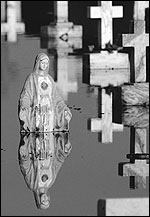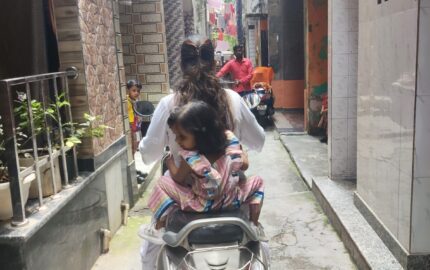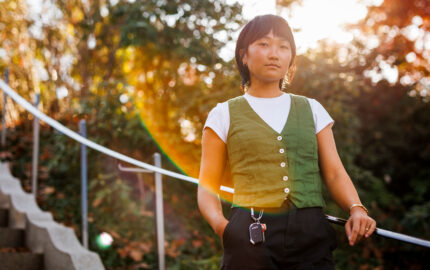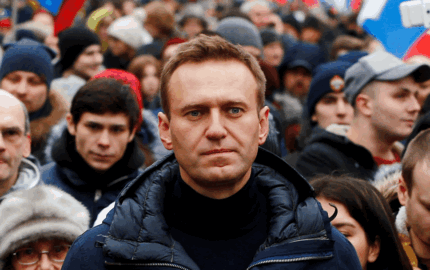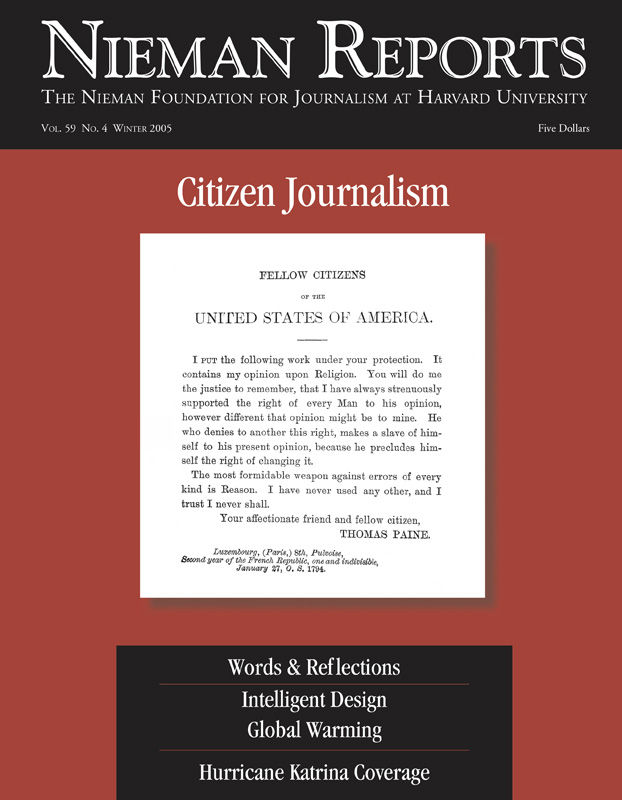
Citizen Journalism
With the arrival of the Internet, the ability of nonjournalists to “publish” their words and link them with those of other like-minded scribes has altered forever the balance of power between those who control the means to publish and those who have something they believe is important to say. This shift from journalists as gatekeepers to citizens as reporters has profound implications for news organizations that “might have completely underestimated the influence of this new medium.”
The aftermath of Hurricane Katrina was unlike anything I had ever seen in America. I had covered the Oklahoma City bombing and 9/11, the Columbine massacre, along with earthquakes and wildfires in California, but this was different. In most disasters I have witnessed, there is finality from the start. But when I arrived in New Orleans on the second day of flooding, masses of people were still trapped in their homes, the Superdome, and stranded on freeway overpasses. I saw people wading chest-deep down Canal Street, along with a pregnant cat swimming for her life. One man stood calmly holding onto a lamppost, only his head showing above water, while others begged to be rescued from the second floor of their homes. In Mississippi, a young boy from Biloxi sat exhausted in the rubble, after he and his parents survived the storm surge by swimming among the rooftops.
In those early days, rescue teams were overwhelmed trying to evacuate thousands who pushed their way onto buses, their babies and bags in hand. I saw one child resting in a discarded box and a new litter of puppies in another. Survival is a natural instinct, but for some the horrendous conditions were too much. One of the most shocking moments for me was seeing a woman’s body, half submerged in water near the Superdome parking garage, as military vehicles passed her by. I had seen many bodies covering conflict zones around the world, but even during war the deceased are treated with some respect, their bodies covered, removed, or buried as soon as possible. It would be days, even weeks before the fatal victims of New Orleans were finally retrieved.
The only uplifting aspect of covering this tragedy was the immediate response from readers. Each day, several people would write to me offering money or housing for those in the pictures. Others were relieved to see someone they recognized in a photograph still alive. Some wanted to know if stranded animals I’d seen had been rescued, or begged me to do more. I transported many animals while continuing my work, but the task was endless. After nearly three weeks, I left New Orleans expecting to return in a month, but the public attention had already drifted away.
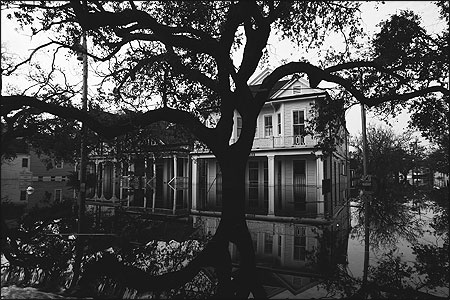
The streets of Mid City, the second oldest neighborhood in New Orleans, were completely flooded. Photos by Carolyn Cole/Los Angeles Times.
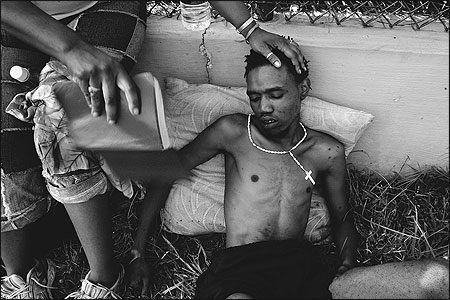
Ceasar Martin, 20, was fanned with a Bible by his mother, Linda Brown, as they waited at the New Orleans Convention Center to be evacuated. Martin was suffering from dehydration and lack of food.
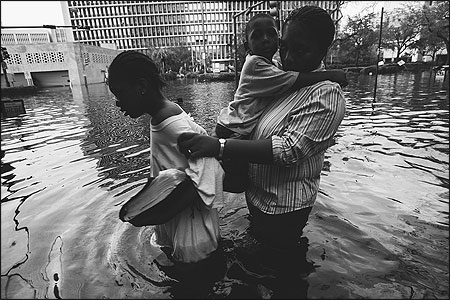
A family waded towards the New Orleans Superdome, where thousands of people hoped to be evacuated from living conditions that had become almost unbearable.

Members of the 82nd Airborne of Fort Bragg, North Carolina went door-to-door in search of New Orleans residents who had not yet been evacuated.
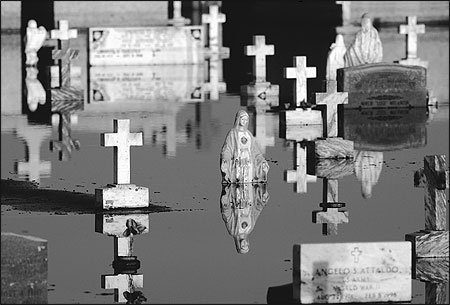
Graves remained flooded in the Metairie Cemetery in New Orleans. In this graveyard, some of the crypt doors came open.

Residents of New Orleans were exhausted from waiting to be evacuated from the city after days of uncertainty. Many were suffering from dehydration, such as the woman lying down, as they waited to board buses to the Houston Astrodome.
Carolyn Cole is a photojournalist with the Los Angeles Times. In 2004 she was awarded the Pulitzer Prize for feature photography for her coverage of the Liberian civil war. Her work was cited for its “special attention to innocent citizens caught in the conflict.”
In those early days, rescue teams were overwhelmed trying to evacuate thousands who pushed their way onto buses, their babies and bags in hand. I saw one child resting in a discarded box and a new litter of puppies in another. Survival is a natural instinct, but for some the horrendous conditions were too much. One of the most shocking moments for me was seeing a woman’s body, half submerged in water near the Superdome parking garage, as military vehicles passed her by. I had seen many bodies covering conflict zones around the world, but even during war the deceased are treated with some respect, their bodies covered, removed, or buried as soon as possible. It would be days, even weeks before the fatal victims of New Orleans were finally retrieved.
The only uplifting aspect of covering this tragedy was the immediate response from readers. Each day, several people would write to me offering money or housing for those in the pictures. Others were relieved to see someone they recognized in a photograph still alive. Some wanted to know if stranded animals I’d seen had been rescued, or begged me to do more. I transported many animals while continuing my work, but the task was endless. After nearly three weeks, I left New Orleans expecting to return in a month, but the public attention had already drifted away.

The streets of Mid City, the second oldest neighborhood in New Orleans, were completely flooded. Photos by Carolyn Cole/Los Angeles Times.

Ceasar Martin, 20, was fanned with a Bible by his mother, Linda Brown, as they waited at the New Orleans Convention Center to be evacuated. Martin was suffering from dehydration and lack of food.

A family waded towards the New Orleans Superdome, where thousands of people hoped to be evacuated from living conditions that had become almost unbearable.

Members of the 82nd Airborne of Fort Bragg, North Carolina went door-to-door in search of New Orleans residents who had not yet been evacuated.

Graves remained flooded in the Metairie Cemetery in New Orleans. In this graveyard, some of the crypt doors came open.

Residents of New Orleans were exhausted from waiting to be evacuated from the city after days of uncertainty. Many were suffering from dehydration, such as the woman lying down, as they waited to board buses to the Houston Astrodome.
Carolyn Cole is a photojournalist with the Los Angeles Times. In 2004 she was awarded the Pulitzer Prize for feature photography for her coverage of the Liberian civil war. Her work was cited for its “special attention to innocent citizens caught in the conflict.”
